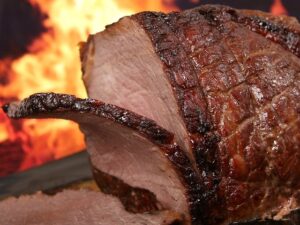Introduction
Italian sausage is a popular ingredient in many dishes, known for its rich flavor and versatility. If you’re wondering about the protein content of Italian sausage, this article will provide you with an in-depth analysis. We’ll explore the protein content, variations in different types of Italian sausage, and how it can fit into a balanced diet.
Protein Content in Italian Sausage
Italian sausage typically contains a significant amount of protein. The exact protein content can vary depending on the specific recipe and brand. On average, a 100-gram serving of Italian sausage provides around 15-20 grams of protein. This protein content is derived from the meat used in making the sausage, which is usually pork or a combination of pork and beef.
Variations in Protein Content
The protein content in Italian sausage can vary depending on the type and ingredients used. For example, sweet Italian sausage, which is flavored with herbs and spices but does not contain any hot peppers, generally has a similar protein content to regular Italian sausage. On the other hand, spicy or hot Italian sausage may have a slightly higher protein content due to the addition of hot peppers or chili flakes.
It’s important to note that certain variations of Italian sausage, such as chicken or turkey Italian sausage, may have a slightly lower protein content compared to traditional pork or beef-based sausages. These variations are often marketed as leaner options but may still provide a good amount of protein.
Incorporating Italian Sausage into a Balanced Diet
Italian sausage can be a delicious addition to various dishes, but it’s essential to consider its place in a balanced diet. While it does provide a decent amount of protein, it is also high in fat and calories. Therefore, it’s recommended to consume Italian sausage in moderation and pair it with other nutritious ingredients.
One way to incorporate Italian sausage into a balanced diet is by using it as a flavoring agent rather than the main protein source. For example, adding a small amount of crumbled Italian sausage to a vegetable-based pasta dish can enhance the flavor without overpowering the nutritional balance. Alternatively, you can opt for leaner variations of Italian sausage, such as chicken or turkey, to reduce the fat content while still enjoying the taste.
Conclusion
Italian sausage is a protein-rich ingredient commonly used in various dishes. While the exact protein content can vary depending on the type and brand, a 100-gram serving of Italian sausage typically provides around 15-20 grams of protein. It’s important to consider the fat and calorie content of Italian sausage and incorporate it into a balanced diet accordingly.
References
– USDA FoodData Central: fdc.nal.usda.gov
– Nutritionix: nutritionix.com
– MyFitnessPal: myfitnesspal.com













